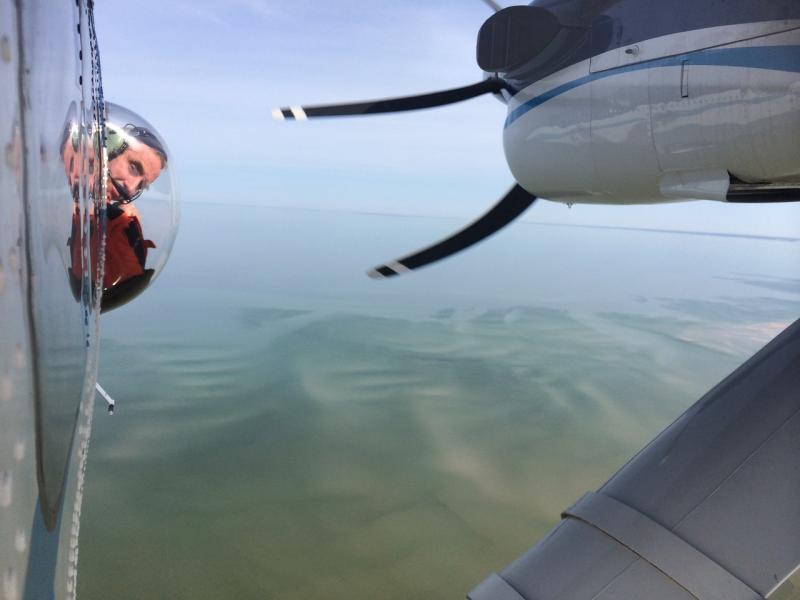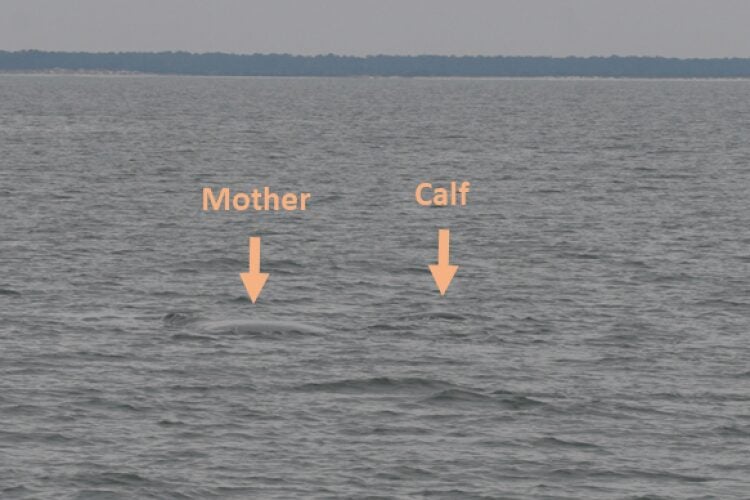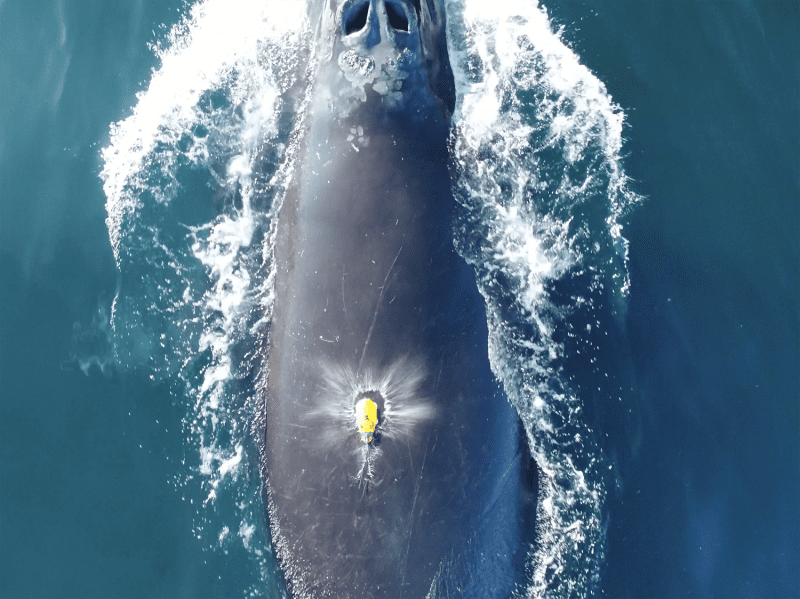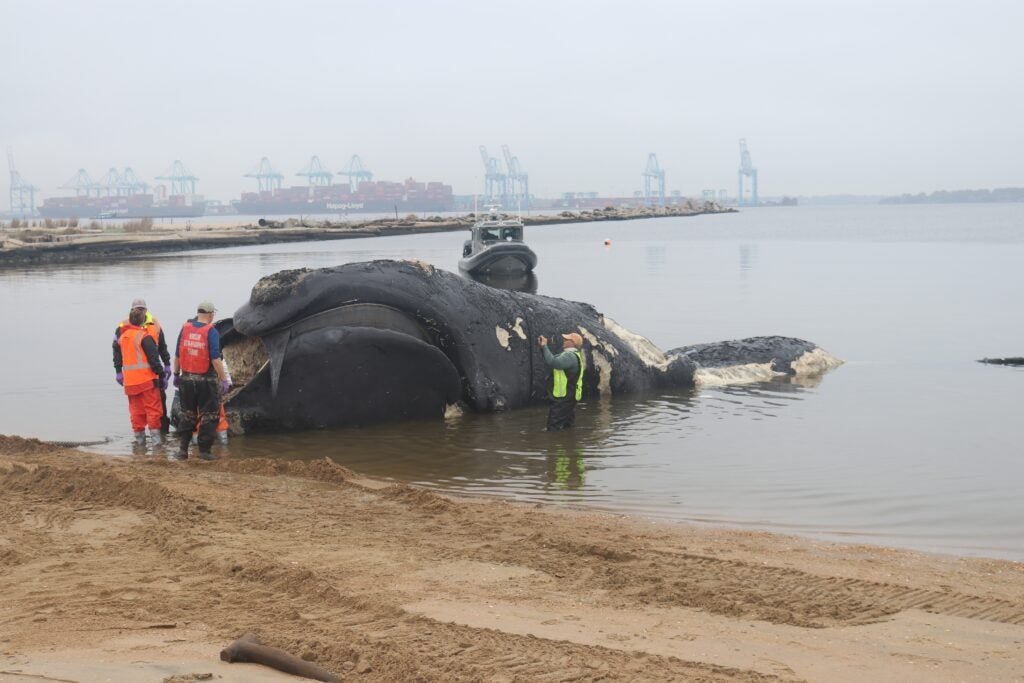June 7, 2024
Can Technology Save the North Atlantic Right Whale?
The North Atlantic right whale is one of the most endangered whales on the planet, with only an estimated 356 individuals remaining within the entire population; at least nine of those have perished this year alone. The top two causes of injury and death are boat strikes and entanglement in fishing gear.
To address collisions with speeding boats, the U.S. federal government created a network of slow zones along the U.S. Atlantic coast in 2008. Slowing down significantly reduces the chance that a North Atlantic right whale will be killed by a boat. In the 15 years since the slow zones were established, the ocean has changed and the North Atlantic right whales’ footprint has shifted. As a result, in 2022, scientists and experts at the National Oceanic and Atmospheric Administration (NOAA) proposed an update to the 2008 Vessel Speed Rule to better protect North Atlantic right whales by:
- Expanding the regulations to include boats 35 to 65 feet (currently only vessels larger than 65 feet are subject to the regulations),
- Changing the all speed zones to be mandatory,
- Modifying the location of the seasonal speed zones to better align with the places and times when whales are expected to be found, and
- Improving the safety provisions to explicitly allow faster vessel speeds when human health or safety is at risk.
For more than 50 years, NOAA has had the authority and responsibility under the Endangered Species Act to protect and recover endangered and threatened species based on the best available science. Not the best theoretical or developing science, but the best available.
NOAA estimates that the improved and updated vessel speed rules will have “major beneficial impacts on right whales” and remove more than 90% of vessel strike risk by boats over 65 feet with additional protections for smaller boats that are known to hit and kill right whales.
Oceana and our supporters have been waiting for the necessary updates to the Vessel Speed Rule to become on-the-water protections for more than 18 months since it was first proposed. While the necessary updates languish on President Biden’s desk, these whales are left in danger and many whales have been killed by boats while we wait for action.
Opponents to the updated slow zones have predictably claimed that technology – not slowing boats down – is the answer. To be clear, there are no proven or scalable technology advances available today to protect right whales from speeding ships.
Below are some of the emerging developments, and while promising, more research is needed to ensure they could, in the future, provide protections that the remaining whales need. North Atlantic right whales don’t have the luxury of time to wait for new technologies to be developed and scaled up. What has been scientifically proven is that slowing boats down reduces the risk of collision.
NOAA Fisheries convened a workshop in March 2024 to discuss some of these new technologies, including:
Visual Surveying

Aerial, land and vessel-based visual surveys are an important tool to understanding population distributions and sighting new mother-calf pairs. Visual surveys are very useful scientifically to count and document whales but are inadequate to prevent vessel strikes. North Atlantic right whales are dark in color and lack a dorsal fin, making them difficult to spot. Visual surveys also rely on whales being detected at the water’s surface and do not detect whales coming up to the surface from dives. Visual surveys are also virtually impossible at night when commercial vessels are transiting.
Can you see the whales below? Now imagine trying to spot them while you’re in a moving boat.

So while aerial surveys are useful for covering a large swath of ocean, they are difficult logistically and dangerous for the crew and scientists who operate the planes far from shore, often in the dead of winter.
Acoustic Monitoring
Like visual surveys, acoustic monitoring (using listening devices generally mounted on buoys and underwater drones) is important for detecting North Atlantic right whales to better understand their population movement over time and alert mariners when a whale may be in the area. However, North Atlantic right whales are not as vocal as other whales that “sing” or vocalize and their calling rates are variable.

In particular, mother-calf pairs and foraging whales have low calling rates, making them difficult to detect with this monitoring method. Some scientists have suggested that many listening buoys would need to listen for many hours to be sure that a single whale was not in any particular place. This makes acoustic sampling an unreliable measure of detection to prevent boat strikes in America’s busy oceans.

Satellite Imaging
With recent advancements in satellite image clarity, it is now possible to view whales from space. However, this technology still has a long way to go before it can be used for vessel strike avoidance because it is highly dependent on ocean and weather conditions, where cloud cover can prevent detection. It is also very resource-intensive – a single satellite image could cost tens of thousands of dollars and effective protection based on satellites may need hundreds or thousands of images per day to ensure boat traffic is operating safely.
There are also not enough images yet to train an artificial intelligence algorithm to recognize North Atlantic right whales, so images must be combed through manually by looking for a whale that is less than a hundred pixels out of thousands within one photo.
Tagging Whales
You might ask: why not tag all of the whales and use satellites to let us “see” where all the whales are?
Tagging is a useful tool for scientists to better understand North Atlantic right whale habits and movements. However, the idea of tagging every whale and tracking them to avoid collisions is not realistic or practical.
First, no tag is well-suited to tagging North Atlantic right whales. Both types – suction cups and implantable darts – have drawbacks that prevent their widespread use.

Suction cup tags are applied to the whale’s back and do not harm the animal, other than potential stress caused by being approached by research vessels. Suction cup tags are great for short-term data collection, but they only stay attached for hours or days before coming off.
Implantable dart tags anchor in the blubber of the whale or deeper into the muscle. These tags cause stress to the whales and open them to infection. If successfully implanted, a dart tag can stay on for weeks to months and can provide short-term tracking data on whales. Implantable dart tags are resource-intensive to deploy and pose an increased risk of infections, muscle damage and delayed reproduction in whales.
Tagging is not a realistic way to prevent vessel strikes because tags do not remain on the whales for long enough to provide consistent tracking and are potentially dangerous and painful to the whales.
Additionally, not every whale can be tagged. Calves, breeding females and whales in poor health are currently not permitted to be tagged, meaning that these vulnerable populations would be left unprotected from the threat of vessel strikes.
Finally, tagging as a foundation for whale avoidance would require each whale to be found and tagged many times per year. This is a monumental and expensive task.
Infrared Detection
Infrared detection is a promising emergent technology for on-vessel whale detections in the future. The thermal imaging camera detects a whale by capturing the temperature difference between the cool surface of the water and the warm blow of a whale at the surface. This image is then fed into a detection algorithm that can be trained to identify whales from other objects.
Many questions still need to be answered before this can be considered a viable tool to help prevent vessel strikes. First, even the most advanced systems still require all possible whale identifications to be checked by a human researcher, making this impractical for immediate use. More research also needs to be done on the impact of weather conditions, effectiveness on smaller vessels that cannot mount cameras as high above the water, and whether whales can be detected quickly enough or at a sufficient range to alert boaters to change course and avoid the whales.
Cost is also an issue: while it will decrease with large-scale commercial availability, the researchers reported that current units cost $20-30,000.
Finally, as with visual detection, this also will not provide protection for whales that are just below the surface as they are not spouting and will be missed by the thermal cameras.
Conclusion
While many hopeful technologies are on the horizon that may help North Atlantic right whales, many of these are nascent and not ready for widespread implementation. If any of these or new technologies are proven effective at preventing boat strikes in the future, we can consider modifications to existing regulations at that time. Until then, we need to trust the science that tells us boats need to simply slow down before it is too late for this species.
The solution is free and it is available today. Our government needs to take action using the tools we have, not the tools we might have at some point in the future.
North Atlantic right whales do not have time to wait. Whales are dying today from speeding boats.

MOST RECENT
September 3, 2025
Air Raid Panic to Informed Skies and Seas: The National Weather Service in a Nutshell
August 29, 2025
August 22, 2025
Corals, Community, and Celebration: Oceana Goes to Salmonfest!



